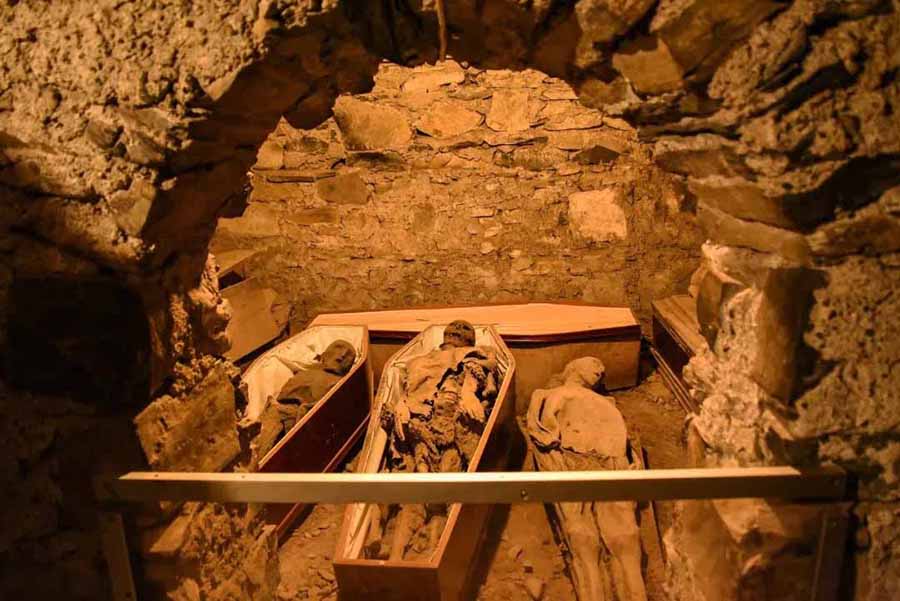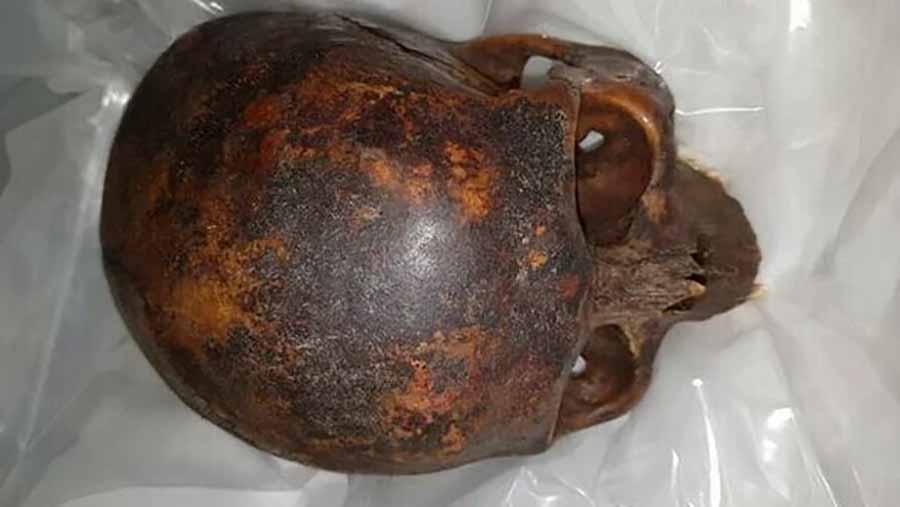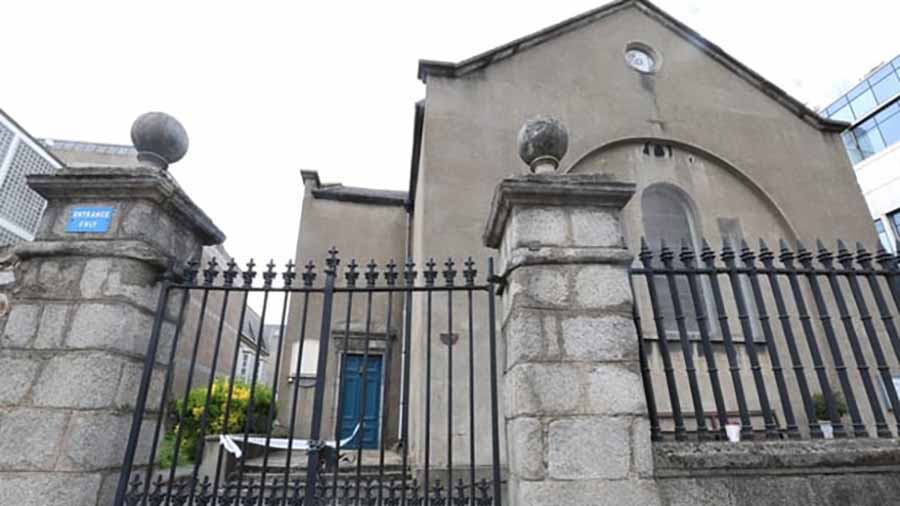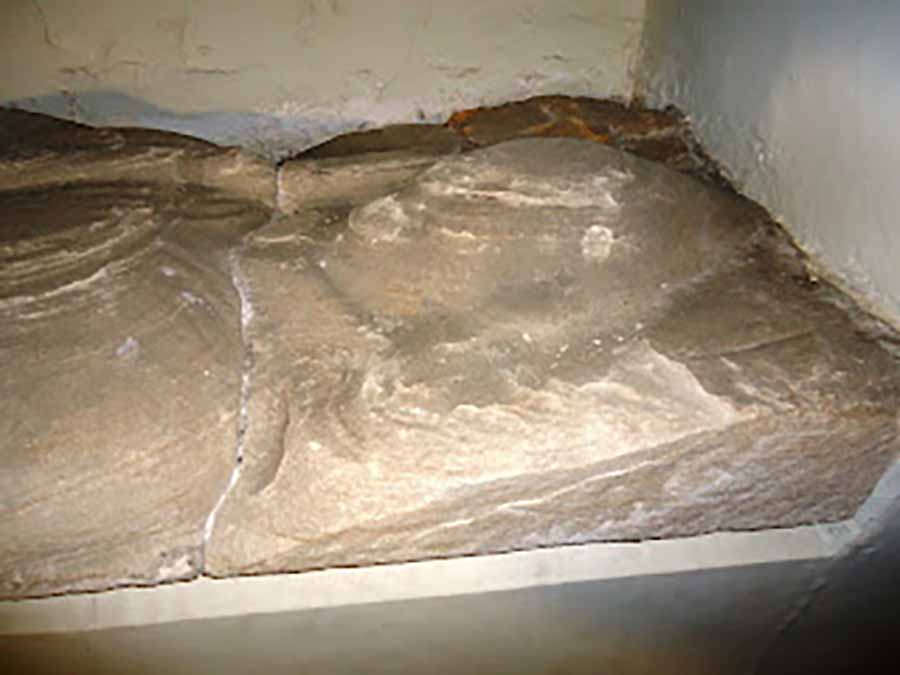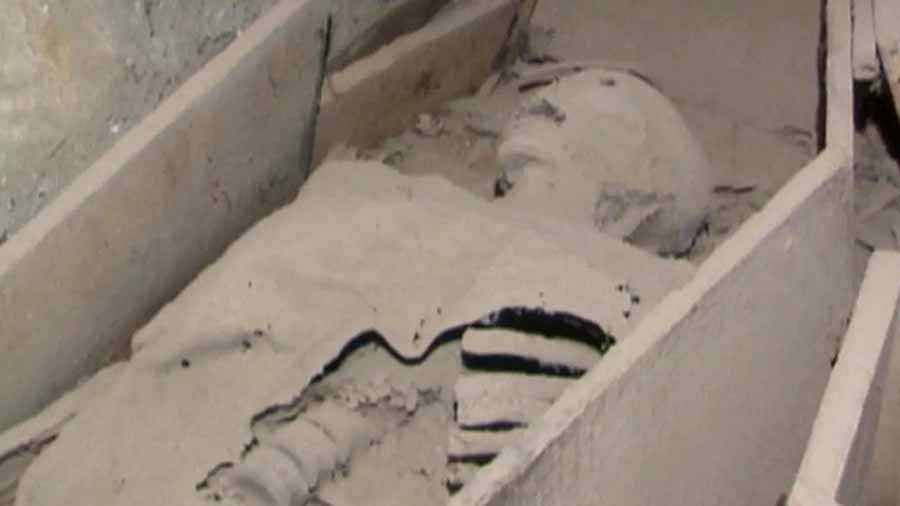
The historic crypt of St Michan’s Church is set to reopen to the public after it was forced to close for nine months due to vandalism.
The Archdeacon of Saint Michan’s church told a Dublin court in February that his parish would seek approval from Dublin City Council to exhume the damaged remains from a vandalised crypt and “have them re-interred into another vault which will be closed to everyone”.
Archdeacon David Pierpoint described the incident’s emotional toll on him and the parishioners, stating it represents a loss for both Dublin and the wider nation. He has said that the parish is in dire straits and needs financial support to reopen the facility, one of the most unique on the Dublin tourist trail
Romanian born Cristian Topiter, aged 39, was sentenced to six years in prison for arson after setting fire to the crypt. The fire, which occurred on 11 June, led to a complete suspension of tours at the church, triggering a financial crisis for the parish reliant on annual revenues between €75,000 and €100,000.
Crusades and Ireland
Evidence is scarce of crusaders from Ireland who participated in the headline first five crusades of 1095-1221. Those with Irish connections such as Wexford landowner William Marshal. The crusades are barely mentioned in Irish language chronicles. While the Hollywood version of the Crusades involved these serial attempts to recapture Jerusalem, there were over 100 other “crusades,” against perceived heresies, for commercial gain or for less obvious motives, such as the infamous Albigensian crusade of 1209 in which Hugh de Lacy participated.
The single greatest Irish participation in a crusade was the eighth crusade of 1270, diverted to Tunis instead of the Holy Land (the troops were only informed of this when they stopped in Sardinia), which ended in defeat after the death of the King of France from dysentry. The Treaty that ended the war had been signed by the time the Irish delegation arrived. They returned to Sicily, from where they went on to the Holy Land where the forces agreed a cease fire after the attempt to retake Jerusalem suffered a series of military setbacks.
The tradition persists in Lisbon that Saint Brigid’s skull was taken from Armagh to Portugal in 1283 by three Irish knights travelling to the crusades, possibly to the Aragonese ‘crusade,’ in reality an invasion of Spain by Philip III of France. The pageantry that accompanied the transfer of relics to the parish church in Kildare was re-enacted in 2024 to commemorate the 1500th anniversary of the saint featured three modern day horsewomen playing the role of the knights.
Saint MIchan’s
The oldest parish church in Dublin, saint Michan’s was established around 1096 (a date for which the only source is an account by Meredith Hanmer 500 years later) for the rapidly expanding colony on the north side of the Liffey by Samuel Ua hAingliui, Dublin’s fourth bishop and, controversially, first archbishop, have appropriated the title for himself 60 years before it was confirmed at the Synod of Kells in 1152l.
Archbishop/bishop Ua hAingliui dedicated the church to Saint Michan and created a potential rival to Christ Church as Dublin’s cathedral, moving the vestments and the library there to the chagrin of the Benedictine monks at Christ Church. Perhaps the first recorded instance of northside/southside rivalry. The ancient tomb with effigy of a bishop without pallium is most probably Samuel’s. The cloister controversy re-erupted a century later and led to the establishment of Saint Patrick’s Cathedral, just a few hundred yards from Christ Church by Dublin;s seventh bishop, John Comyn.
it is unclear whether Saint Michan was Irish or Northman. His is recorded in the martyrologyof Donegal as Michen O Chill Michen i n’Ath’ Cliath, feast day August 25, and the name spelled in various ways in other documents. The south aisle of the church was dedicated to Saint Syth or Osyth (feast day May 13), whose religious guild of men and women received its charter in 1476.
Until 1697 St Michan’s was the sole parish church on the north side of the River Liffey. It is first recorded in the calendar rolls in 1179 as one of the possessions granted to the Canons of Holy Trinity. by Saint Lorcan Ua Tuathail, the second archbishop to succeed Samuel, with the rights to tithes of salmon and other fish on both sides of the Liffey. In 1541 the church was assigned to Christ Church Cathedral. It was rebuilt in 1685-6; the tower and possibly the vaults date to this period. Archaeologist Tadhg O’Keeffe thinks that the steps to the vaults are older than the vaults themselves and may follow the alignment of the pre-1685 church. Saint Michan’s was extensively modified in 1828, when the old chancel was demolished. The modern church has sitting capacity for 1,000, larger than Christchurch, Saint Patrick’s or any of the major Anglican cathedrals in ireland at the time.
The Vaults
The bodies in the vaults have never been archaeologically investigated or dated and the theory that the tradition of the Crusader may be a late, romantic, invention was explored by academics, most recently by historian Emer Purcell in the 2022 book: Ireland and the Crusades edited by Edward Coleman, Paul Duffy and Tadhg O’Keeffe.
Travel writers visiting the vaults in 1775, 1825, 1832 and 1834 did not mention the crusader at all. As fascination with the crusades grew in the mid 1800s, a tall mummy named as “:The Jesuit” in 1834 may have been renamed, as his legs were crossed, a tradition once thought to have been associated with crusaders in a tradition that originated in the 1600s and 1700s but abandoned around the time that Dublin’s alleged crusader was first coming to notice
As early as 1888, genealogist Arthur Vicars wrote: “It is a popularly received idea that these bodies are several hundred years old, and people go even so far as to say the body of a man with his legs crossed in the coffin nearest the wall is a crusader. The absurdity of this wild notion is obvious when we look at the coffins, which we have reasons for thinking are the original ones in which the bodies were first placed. They are of the ordinary shape of the present day. Everyone knows now that the cross-legged crusader theory is long since exploded.”
Architectural historian Maurice Craig contended that the crusader’ is not a crusader and the remains ‘most likely date to the early modern period.” Carol Smith of the National Museum of Ireland reported i 2009 during conservation work after a previous theft the ‘crusader’ head there was a very strong aromatic smell suggesting the use of embalming oils. The presence of the oils meant carbon-14 dating was not possible.
The crusader is not alone in the dating anomaly game. The nun with the preserved finger nails, another favourite with visitors, was recorded by the Dublin Penny Journal in 1832 “having died at the advanced age of 111; the body has now been thirty years in the mansion of death,” but in 1888 medical writer Lawson Tait was told she dated back to the twelfth century.
